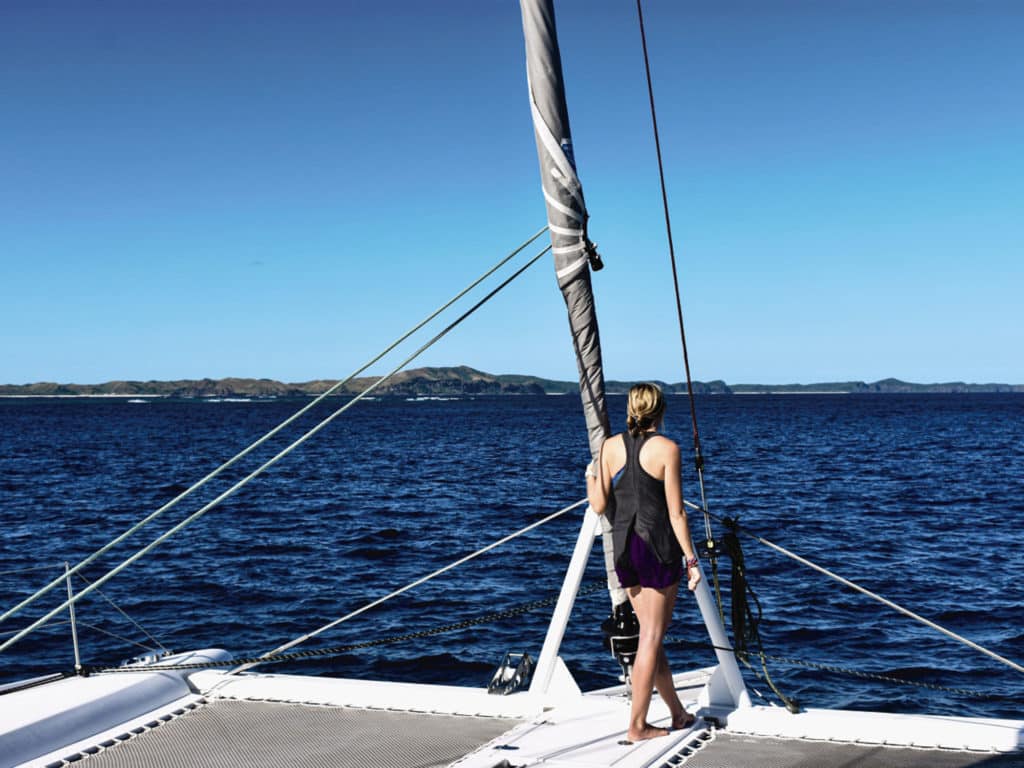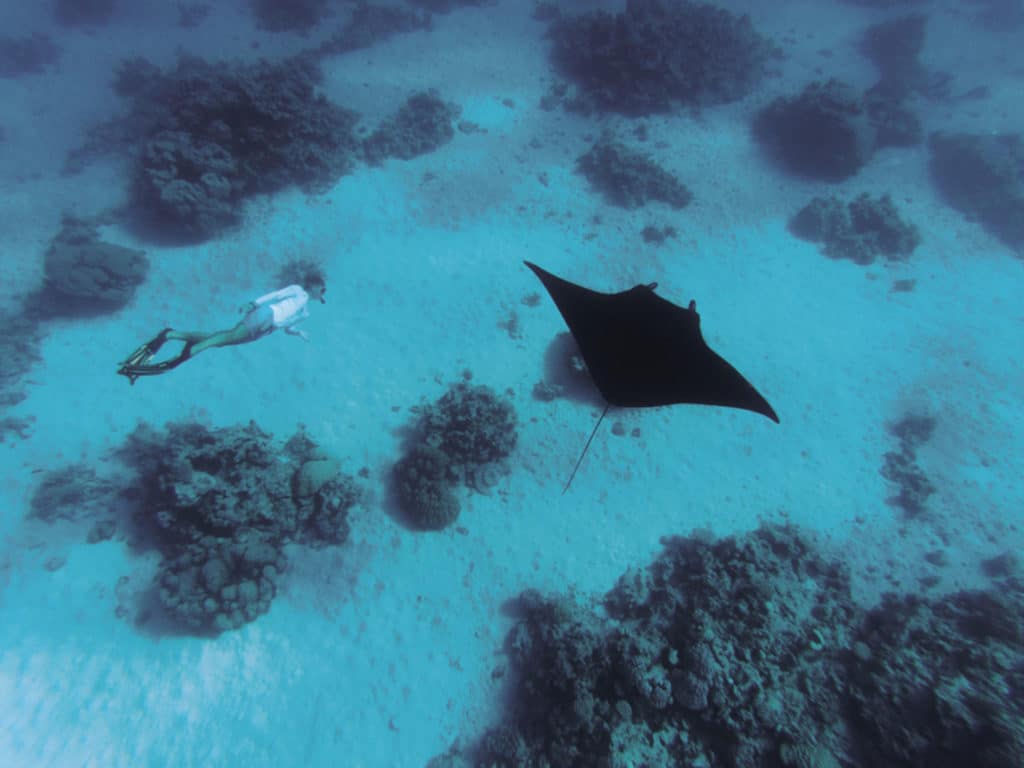
Sun rays beamed down into the deep blue water, illuminating the faded rope that ended in a small weight, hanging just barely in sight in the clear Fijian sea. I held onto the buoy the rope was tied to, floating at the surface and staring at the weight 20 meters below me. I was familiar with this depth as a concept; I’d scuba-dived around it and Cayuse could anchor in it, but I’d never thought about sending my body down there unaided, willfully.
I’d been sailing with my parents on Cayuse, an Outremer 51, for a year at this point; we were circumnavigating with the World ARC. After graduating college I had joined them, and while sailing itself took up most of our time, I needed a new hobby to give myself a sense of purpose. Matt, my boyfriend and our other crewmember, and I had signed up for an SSI Freediving course at Mantaray Bay; I wanted a challenge, and Matt saw it as fun and a useful skill for cruising.
A siren wailed from shore after we dropped anchor in deep water off the Mantaray Island Resort, an eclectic hostel and hotel next to a narrow cut between two islands in the Yasawas. It was the manta ray alarm, which went off daily when manta rays were spotted swimming through the channel. The strong currents whipping through made it an ideal feeding ground for the gentle giants, and the namesake of the resort. We dinghied ashore as guests frantically gathered rented snorkel gear and rushed to fiberglass runabouts manned by locals to take them out to glimpse the graceful rays.
RELATED: Freediving in Tonga
We walked over to the dive shack and were greeted by a tall, suntanned Australian man in a tank top and mirrored sunnies. A little weathered around the edges, he had long hair that was blond-streaked and shoulder-length; he could have been 35 or 50.
“Bula! Are you guys the yachties here for freediving?” he asked, staggering a little.
“Yeah, we’re here for a few days, so we thought we’d try it out,” I said.
“Well good on ya! My name’s Ryan, and I’ll be your instructor. Here are a couple of workbooks, and let’s get started!” he said, tossing us two worn Scuba Schools International textbooks.
We soon learned that he was the co-owner of the resort, which he had built from the ground up in 2002 with his then-girlfriend.
Ryan instructed us to lie down on the sand so we could practice “breathing up.” Breathing up is a one- to two-minute period of breathing before a dive that focuses on relaxing the body and mind in order to spend a period of time without breath underwater. I breathed in and out for several minutes with my eyes closed; lying under the palm trees on a beach in Fiji, I immediately felt pretty Zen. Then Ryan told us to breathe in deeply and hold it, starting a timer once we stopped breathing. I gasped for breath after a measly 45 seconds, while Matt held his for one minute, 15 seconds. He told us how if we focused on breathing every day, we’d increase our lung capacity and ability to hold our breath for longer; Ryan was up to five minutes.

Over the next two days, we did more breathing exercises and swimming challenges, and studied the science of freediving. We learned about the mammalian dive reflex, which happens when the human body submerges underwater; the body responds by slowing down the heart rate, redirecting blood to vital organs to preserve oxygen, and releasing red blood cells from the spleen. Humans were built to swim underwater.
All of our studying and exercises were leading up to the final dive, in which we had to freedive down to 20 meters. Ryan reiterated that the key to successful freediving was being utterly calm, making slow movements with elongated fins, and not rushing. Overexerting yourself underwater could lead to losing oxygen and having to surface sooner, or even blacking out. It was hard to imagine not freaking out while swimming slowly into the deep, away from fresh air and sunlight.
Floating next to the buoy, I timed myself for a two-minute breathe up, breathing normally until taking three final deep breaths before I duck-dived down.
I kicked my legs slowly, trying to maintain a leisurely pace following the rope down, seemingly into oblivion. I couldn’t see the bottom. My thoughts drifted to how I could check the anchor at new depths, rescue lost items overboard, or swim next to sea creatures without spooking them with oxygen bubbles.
Within seconds, I reached the weight and looked down at the seafloor, now within sight. What if I kept going? I looked all around me, blissfully surrounded by pure blue. Time slowed down as I undulated with the ocean, neither sinking nor floating. I felt the first urge to breathe and turned around, taking deliberate strokes toward brighter water, Matt and Ryan floating above me. I slipped through the water to the surface, elated, gasping for breath and squinting in the bright equatorial sun. I felt my need for a new purpose slipping away, down into the deep blue depths.








